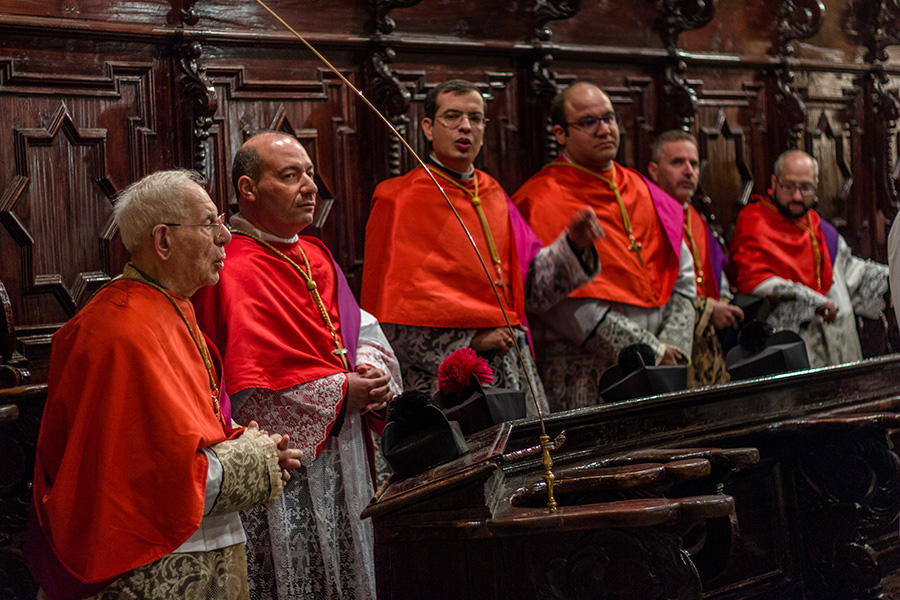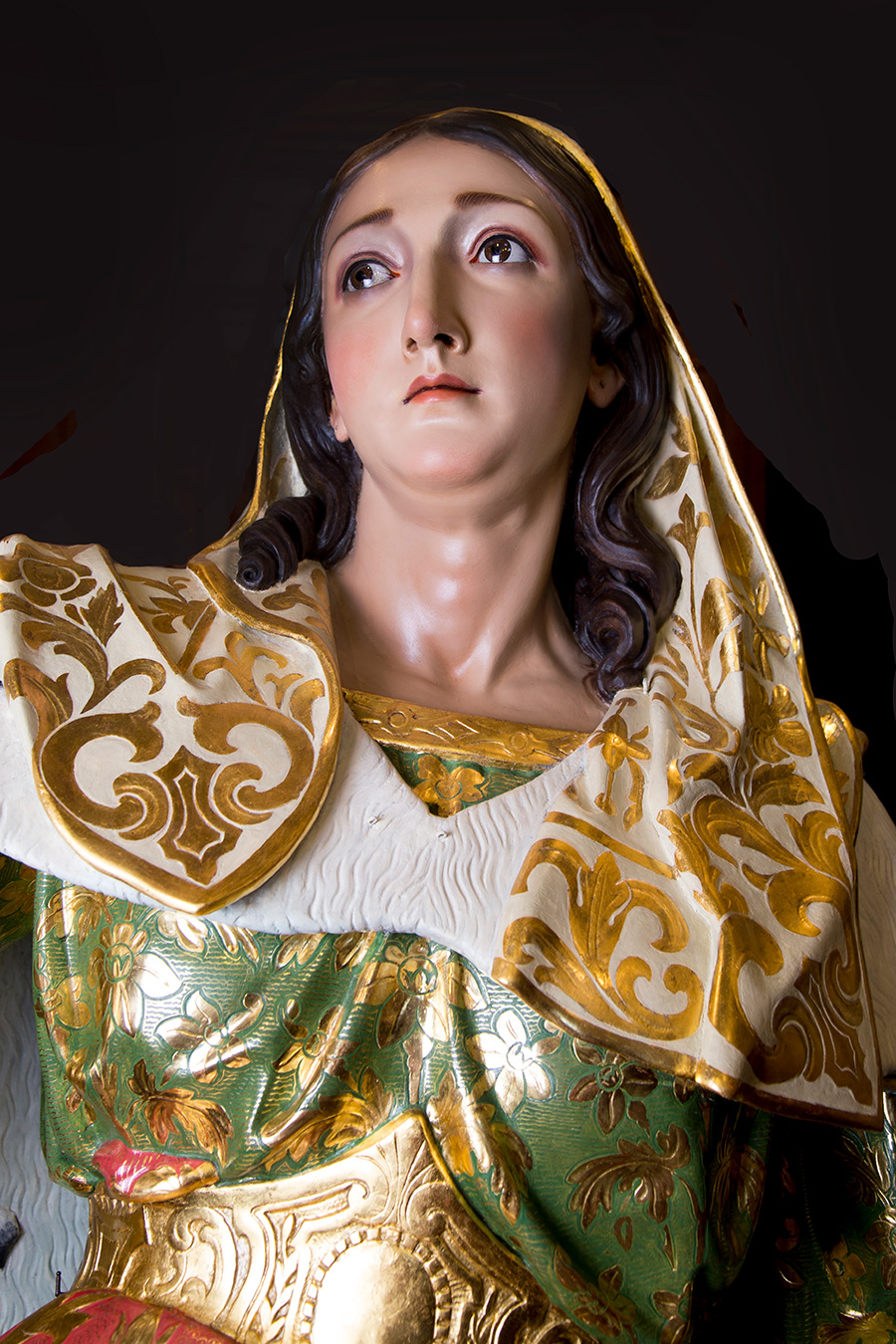Introduction to the Museum
The introduction to the museum is based on the four main themes that give an identity to Birkirkara and its locals. Through the information and documentation presented in this area one can appreciate and to a certain extent understand the impact of all this on the local culture.
The Collegiate
The Sancta Helena Regina Collegiate at Birkirkara was founded in 1630. For this Pope Urban VII promulgated the Bull Sacri Apostolatus Ministerio. It was achieved through the initiative of Parish Priest Don Filippo Borg. In his original intention, it was not meant to be simply another religious or ecclesiastic pious foundation
The Order of the Knights of Saint John had come to Malta in 1530. But as the seventeenth century wore on, matters were not so rosy for the Maltese under their rule. The opening words of Pope Urban VIII’s Bull state that the founder’s wish was that through the foundation, earthly wealth be changed to heavenly wealth.
But knowing the contemporary historical background, knowing what such a Collegiate really implied at that time and reading between the lines, one cannot but perceive that besides the ecclesiastic, there was a social and even political aspect to it.
The establishment of the Collegiate with twelve canonries and a Provost, did not imply only endowing the parish church of Birkirkara with a college of canon-priest to enhance the celebration of divine worship. It originally also meant to endow it with freedom of jurisdiction not only for the church or the town but for all its territory. It was not to be subject to the local Bishop or the Grandmaster. In fact it was to be subject directly to the Holy See.
This did not mean only that the local Bishop was losing jurisdiction over a sizable part of the diocese, but in the case of the Grandmaster, the setting up of the Birkirkara Collegiate also meant that the territory to the West of Valletta, on the other side of Marsamxett harbour was practically independent from his rule. Both Bishop and Grandmaster protested strongly with the Holy See and eventually the jurisdictional part was rescinded. This led to a delay and it was only in 1635 that the canonry was installed. In 1787 the Birkirkara College of Canons war further augmented by four canonries in through a second additional foundation by Canon Perin Borg.
The Basilica
The people of Birkirkara decided to build a new parish church, in honour of Saint Helen in 1716 and the foundation stone was eventually laid in 1727. The architect-designer was Salvu Borg from Siġġiewi who was one of the foremost master-masons in Malta at the time. Unfortunately he passed away in 1733 during the early stages of construction. Funding came from donations by the clergy and the parishioners who also contributed free voluntary work. A significant benefactor was Grandmaster Anton Manoel de Vilhena, who by the time of his death in 1736 had donated as much as two-fifths of the total expenditure incurred up till that time.
The church, though still incomplete, was blessed and started functioning in 1745. Construction of the dome was ready by 1760 but the western belfry and the old sacristy were completed later, by the 1800s. The eastern belfry was built by 1809 and a couple of decades later, the facade was fully completed including the sculptural decoration and the statuary on the top cornice.
The 1860’s saw the construction of the upper perimetral structures on the sides and rear of the church, which also served as buttresses supporting the dome. During this period a second sacristy, the hall in between the two sacristies, together with the Chapter Hall and annexes on top of these were also completed. Thus it can be said that from start to finish the whole project spanned over a 150 year period.
Quite a number of writers and art critics, local and foreign, heaped praise especially on the architectural merits of Saint Helen Church: A momentuous archictectural triumph –Giovanni Bonello; The finest parish church on the island... It is the façade which is the crowning glory of this church – Quentin Hughes; It is perhaps by such interiors as those. . . at Birkirkara that the skill of the Baroque architect is best displayed – Hugh Braun; … by far the most beautiful building in the island – Sacherverell Sitwell.
Saint Helen Collegiate Church was elevated to the canonical status of a Sacrosancta Basilica in 1950.
The Processional Statue of Saint Helen
The statue was commissioned to Maltese sculptor Salvu Psaila from Bormla, through a contract drafted in 1833. Salvu Psaila is considered to be one of the foremost Maltese sculptors of the nineteenth century. The statue of Saint Helen is rendered in polychromed and gilded wood. Psaila worked also in marble. An exemplar of this aspect of his oevre is the main altar.
The statue was made in the premises of an eighteenth century country villa in Birkirkara. Psaila had to prepare also the pedestal and carrying predella for the said processional statue. The statue stands 2.25 meters high and weighs 256 kilograms. With the rest of the trappings, each bearer carries about 80 kilograms during processions.
Unfortunately when the statue was to be inaugurated, a severe cholera epidemic broke out in the Maltese Islands. All celebrations that were envisaged were therefore shelved for that year. The donor himself, Vincenzo Borg died, but not of the cholera, in July of that year. However the statue was unceremoniously transported to be in the church when his funeral took place.
The Big Bell Helena
The present big bell christened Helena at the Birkirkara Basilica was made at the Prospero Baricozzi foundry of Milan in 1931. It cost 1300 Sterling at the time plus the bronze of the preceding big bell. It weighs 7.8 metric tons.
The people of Birkirkara had longed to have a big bell for their church, so much so that E.B. Vella in his 1934 history of the town observed that the belfry where it now stands is more spacious inside.
Besides late in the 19th century and at the beginning of the 20th there were two attempts to make this wish materialize. One in 1891 by master founder Ġużè Grech and then in 1901 by Ġulju Cauchi both failed.
The funds needed for the present bell were collected in ten months and it arrived in Malta on the 12th January 1932.
It has an inscription in Latin which translates as follows:
In the year 1931
When the Archbishop, Bishop of Malta was
Maurus Caruana
Under the leadership of Carmelo Bonnici
Doctor in Theology
Provost of the Helenian parish
With the Collegial Canons
This bell
That the people to the temple of God
Solemnly dedicate today
Was made in Milan
By Prospero Baricozzi
Financed by the rejoicing parishioners.
Many Karkariżi went down to the Grand Ħarbour to welcome the M.V. Garibaldi that was transporting it. When it was finally lowered on to the wharf, Provost Carmelo Bonnici rang it twice with a hammer.
It was hoisted on a wagon with iron wheels drawn by two mules and transported to Birkirkara where it arrived by sundown and deposited at the Psaila Street, Fleur-de-lys junction.
On the 17th of the month it was taken from there to the church parvis on the same wagon, this time drawn by menfolk. It was solemnly blessed by Bishop Maurus Caruana on the 22nd of the same.
Two days later the big bell was hoisted on to the belfry at a height of some 22m. by Filippo Sammut from Birkirkara. It was rung for the first time next day, 25th January, feast of the Conversion of Saint Paul.






